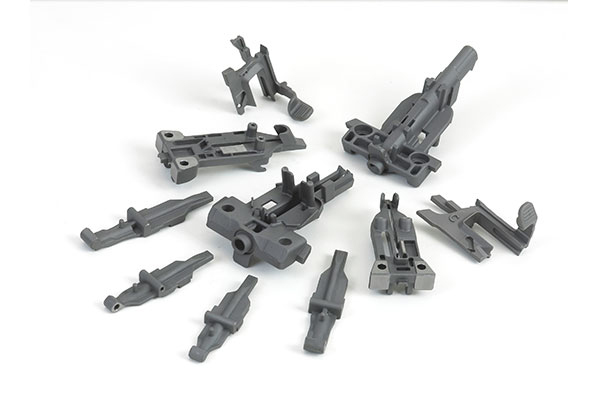Steel casting play a pivotal role in various industries due to their excellent mechanical properties and versatility. The mechanical properties of steel casting, such as strength, hardness, and toughness, can be significantly enhanced by optimizing alloy compositions. This article delves into the strategies for optimizing alloy compositions in steel casting to achieve improved mechanical properties, supported by tables and lists for clarity.

Introduction
Steel casting is integral components in sectors like automotive, construction, and machinery due to their robustness and adaptability. Enhancing their mechanical properties through alloy composition optimization is crucial for meeting the demands of modern engineering applications.
Factors Influencing Alloy Composition
- Base Elements:
- Carbon (C): Primary element determining hardness and tensile strength.
- Silicon (Si): Enhances strength and hardness, acts as a deoxidizer.
- Manganese (Mn): Improves toughness and hardness, counteracts sulfur’s brittleness.
- Alloying Elements:
- Chromium (Cr): Increases hardness, wear resistance, and corrosion resistance.
- Nickel (Ni): Enhances toughness, strength, and corrosion resistance.
- Molybdenum (Mo): Improves hardenability, strength, and high-temperature stability.
- Vanadium (V): Increases strength, hardness, and wear resistance.
- Tungsten (W): Enhances hardness and strength, particularly at high temperatures.
Optimization Strategies
- Elemental Balance:
- Achieving the right balance of base and alloying elements is crucial. Over or under-alloying can lead to suboptimal properties.
- Heat Treatment:
- Post-casting heat treatments like annealing, quenching, and tempering can significantly affect the mechanical properties by altering the microstructure.
- Microstructural Control:
- Controlling the grain size and phase distribution through alloying and heat treatment can enhance mechanical properties.
- Secondary Processes:
- Processes such as forging, rolling, and machining can further refine the mechanical properties of the cast steel.
Case Studies and Practical Applications
- Automotive Industry:
- Optimization of alloy compositions has led to the development of high-strength, lightweight steel components that improve fuel efficiency and safety.
- Construction Industry:
- Enhanced mechanical properties of steel casting has resulted in more durable and resilient structures.
- Machinery:
- Improved wear resistance and toughness have extended the lifespan and reliability of heavy machinery components.
Table: Common Alloying Elements and Their Effects
| Element | Effect on Properties | Typical Applications |
|---|---|---|
| Carbon | Increases hardness and strength | All steel casting |
| Silicon | Enhances strength, deoxidizes | Automotive, machinery |
| Manganese | Improves toughness, counteracts sulfur | Construction, machinery |
| Chromium | Increases wear and corrosion resistance | Aerospace, automotive |
| Nickel | Enhances toughness and corrosion resistance | Marine, chemical processing |
| Molybdenum | Improves hardenability and high-temperature strength | Power generation, oil & gas |
| Vanadium | Increases strength and wear resistance | Tooling, high-stress components |
| Tungsten | Enhances high-temperature strength | Cutting tools, wear parts |
List: Steps for Optimizing Alloy Compositions
- Identify Desired Mechanical Properties:
- Determine the specific mechanical properties required for the application, such as tensile strength, hardness, toughness, and wear resistance.
- Select Base and Alloying Elements:
- Choose appropriate base elements (e.g., carbon, silicon) and alloying elements (e.g., chromium, nickel) based on their effects on mechanical properties.
- Balance Alloying Elements:
- Achieve a balanced composition to optimize properties without causing detrimental effects like brittleness or excessive hardness.
- Apply Heat Treatments:
- Utilize heat treatments like annealing, quenching, and tempering to refine the microstructure and enhance properties.
- Conduct Secondary Processes:
- Implement processes like forging and rolling to further improve mechanical properties.
- Test and Validate:
- Perform mechanical testing to validate the optimized alloy composition and ensure it meets the required standards.
Conclusion
Optimizing alloy compositions in steel casting is a multifaceted approach that involves a deep understanding of material science and engineering principles. By carefully selecting and balancing alloying elements, applying appropriate heat treatments, and conducting secondary processes, it is possible to significantly enhance the mechanical properties of steel casting. This optimization not only improves performance but also extends the lifespan and reliability of steel components in various applications.
In conclusion, the pursuit of optimized alloy compositions is a continuous journey driven by the evolving demands of modern engineering. By leveraging advancements in material science and innovative processing techniques, the future of steel casting promises even greater achievements in mechanical properties and application performance.
